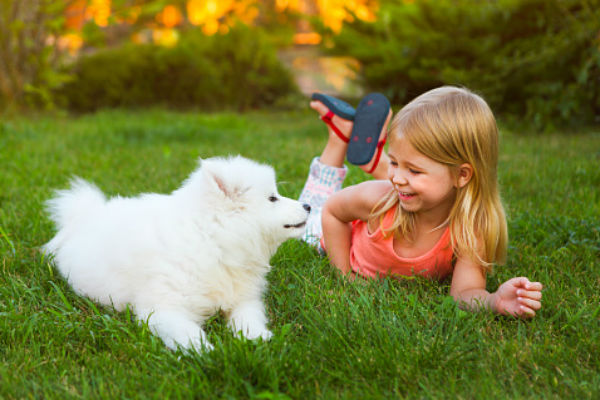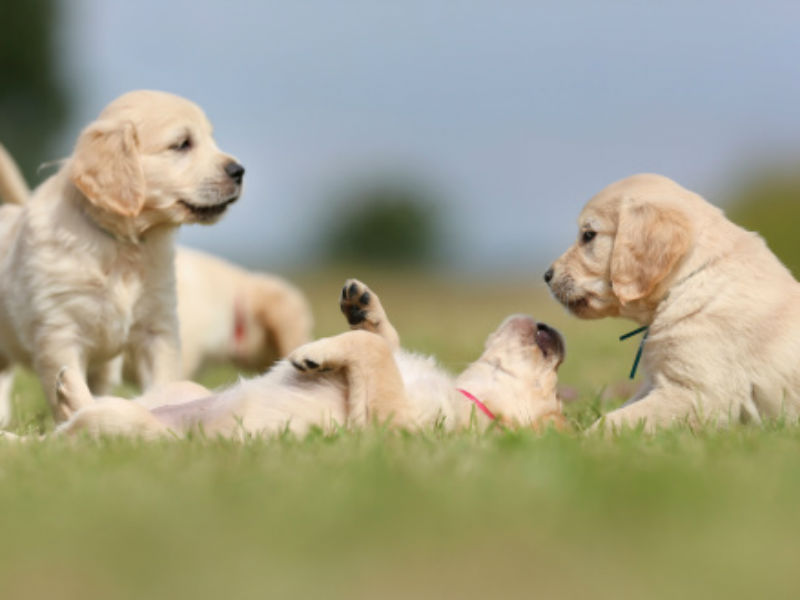Just like human children, puppies love to play.
But since they don’t have opposable thumbs, they use their mouths for most games. Virtually all puppies play this way. It’s normal, and it is not a sign that your pup will become an aggressive dog. Your puppy does not mean to hurt you when he nips, but those baby teeth are sharp.
The good news is that there are ways you can play with your new pup that encourage the behavior you want, while giving him a healthy outlet for his energy.
Always use toys when playing with puppies, never your bare hands. This way you will have something big enough to guide into the puppy’s mouth when he wants to bite and tug. Be careful when playing with young pups; don’t tug hard enough to hurt them. They may be pretending to be fierce, but they are still babies. When playing fetch, if your pup doesn’t like to give a toy back after retrieving it, tempt him with a different toy or treat to encourage him to drop it.
Check out toys that are great for teething pups here.
Summer is right around the corner, and the thought of children and dogs frolicking in the yard together is delightful. But young children should never be alone with any dog or puppy. If the children run and shriek (in fear or play), the puppy may get very excited and could jump and nip even more than usual. It’s how they play with other puppies. When a child pulls her hand or a toy away from the puppy, he might lunge for it, nipping the child’s hand to get what he wants.

When visitors, especially children who are not used to dogs, come over, put your puppy or playful dog in his crate with a treat. Expecting him to ignore your child’s running, screaming friends is not fair. These behaviors beg, “Chase me!”
Children should never be allowed to bother the dog while he’s eating or sleeping, or to take away his toys or treats. Growling is a warning: it means, “please leave me alone,” and that’s just what a child should do when he or she hears a dog growl.
Preventing situations that might encourage biting is the best way to keep kids and dogs safe. You should know how to recognize dog body language that tells you a dog is seriously unhappy. Here’s an article that explains what to look for.
If you think your dog exhibits aggressive behavior that these management tips don’t help you with, consult an animal behaviorist. To find one, click here.


